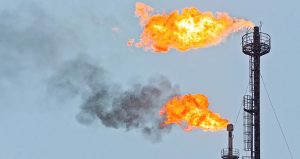Widespread public support, new analysis signal urgent need for strong EPA methane protections
 By Jon Goldstein and Rosalie Winn
By Jon Goldstein and Rosalie Winn
Earlier this month, the EPA closed its comment period on proposed oil and gas methane regulations. Over 400,000 individuals and a broad array of public health, environmental justice, conservation, labor, tribal, faith, youth and other interests — including oil and gas producers themselves — voiced support for EPA to use its authority under the Clean Air Act to enact protective pollution safeguards.
EDF, alongside our partner organizations, submitted comments that underscore how cost-effective protective standards are and the need for EPA to swiftly finalize rules that take more protective action to cut pollution from routine flaring.
Here are some of the highlights from EDF’s public comments, which are available here.
Broad support for key features of EPA’s proposal
Deep public support and powerful data underscore the importance of key features of EPA’s proposal, such as its requirement for inspections at all wellsites, its super-emitter reduction program and its integration of advanced detection technologies. EPA estimates that the standards will deliver tens of billions of dollars in climate benefits for the public alongside cuts in cancer-causing and health-harming pollution, without perceptible impacts on oil and gas production (affecting the price of oil by at most ten cents per barrel, or less than 0.2%).
The latest science shows that low-producing wellsites yield just 6% of U.S. oil and gas but drive over half of all wellsite emissions nationwide. That’s why it’s so important for the EPA to require some form of inspections at all wellsites to protect communities and our climate. New analysis shows that conducting these inspections is far more cost-effective and less time-intensive than EPA has assumed.
Widespread public support, new analysis signal urgent need for strong EPA methane protections Share on XResearch has also repeatedly found that super emitters are a major pollution problem. EDF and Carbon Mapper surveys of the Permian Basin found about 30 super emitter events that persisted over three years, creating the same near-term climate damage as 500,000 passenger vehicles. EPA’s proposed Super Emitter Response Program will give companies, regulators and communities quick access to data collected by certified independent monitors so that operators can swiftly address — and communities can better protect themselves against — these major pollution events.
EPA’s proposal also creates a meaningful pathway for operators to take advantage of advanced methane monitoring technologies. Innovation in methane detection technologies and methods is rapidly advancing, and EPA’s approach offers companies flexibility to use these technologies for regulatory compliance while ensuring effective emissions reductions.
Cost-effectiveness and feasibility of transition to zero-emitting tech
Although small, pneumatic controllers — devices that intentionally vent methane when they open and close valves to regulate temperature and pressure at oil and gas production sites — are the industry’s second leading source of methane pollution. Transitioning to zero-emitting alternatives, as EPA has proposed and Colorado and New Mexico have already begun, is critical to address this pollution.
New research conducted by Analysis Group finds that the transition to zero-emitting devices is cost-effective across all oil and gas producing regions of the U.S. And that’s without even considering the financial savings from gas saved by transitioning to zero-emitting devices.
Additional new analysis from Datu Research reveals that zero-emitting technology is readily available and creating jobs as the industry grows. The Datu report identifies 40 providers of zero-emitting technology across the supply chain, finding that the sector and supply chain are well-prepared to meet demand stemming from proposed EPA regulations.
One supplier noted that, “We are dealing with such basic materials and longstanding technology. The closest thing to a delay is crossing the (Canada-U.S.) border,” underscoring that production of the necessary technologies is not a barrier to industry-wide adoption of zero-emitting controllers.
Need to go further on flaring pollution
One area where EPA can and should go further is addressing pollution from the practice of routine flaring. The International Energy Agency notes that “Stopping all non-emergency flaring and venting of methane is the most impactful measure countries can take to rein in emissions,” and addressing this source of pollution is critical for safeguarding our climate and protecting frontline communities.
Solutions to address routine flaring are overwhelmingly cost-effective and can even net producers a profit, according to Rystad analysis.
EPA must strengthen protections by requiring capture of associated gas using one of several available abatement methods and only allowing temporary flaring under clearly delineated and limited exemptions for certain maintenance activities or for safety reasons. This type of framework has been successfully deployed by states like Colorado and New Mexico and is supported by operators like Oxy.
What’s next?
The Biden administration expects to finalize its proposed regulations by August of this year. We urge the administration to keep to this timeline to get these much-needed protections in place as soon as possible.
Reducing methane emissions from oil and gas is the fastest, most cost-effective way to address the climate crisis while also safeguarding public health for millions of Americans. The wellbeing of our communities and our climate depends on the swift enactment of a protective final rule.










